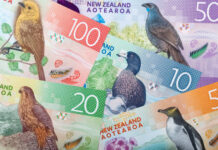Markets
Post-payrolls price action already suggested investors were ready to take up additional US Treasuries exposure in case of a mild US June CPI and this is exactly what happened. Both headline and core CPI rose 0.2% M/M versus 0.3% M/M expected. The headline Y/Y reading due to a positive base effected to declined from 4% to 3%. Core inflation also eased slightly more than expected from 5.3% to 4.8%. Yesterday’s report won’t prevent a Fed rate hike at the July 26 policy meeting, especially not given decent US activity data published recently, but it reopened the debate whether additional rate hikes will be needed post-July. US yields tumbled between 15.5 bps (5-y) and 6 bps (30-y). The 10-y real yield nosedived 15.5 bps, too. The 2-y yield further left the 5%+ levels touched last week and at 4.71% almost fully reversed the up-leg since end June. The picture for the US 10-y yield remains more constructive as it still holds above the previous resistance near 3.85%. German yields followed the US at a distance losing between 11.6 bps (5-y) and 7 bps (30-y). The prospect/hope of the Fed potentially nearing the top of its hiking cycle propelled stock markets with US indices gaining between 0.25% (Dow) and 1.15% (Nasdaq). Europe outperformed (Eurostoxx 50 +1.72%). Brent oil surpassed the $80/b mark, but it still is no big issue for other markets. The sharp decline in US yields and an outright risk-on only intensified the USD sell-off. DXY closed at a new YTD low (100.5). EUR/USD jumped beyond the 1.1095 2023 top to close at 1.1129. Interest rate differentials rather than risk sentiment dominated USD/JPY trading with the pair closing at 138.50, the lowest level since end May. Sterling gained against the dollar (cable close 1.2988), but recorded a significant loss against the euro (EUR/GBP close 0.857). In the broader bond rally, UK yields even declined more than US ones (2-y minus 19.7 bps). Markets apparently concluded that the Fed potentially nearing the end of its hiking cycle would remove some pressure from the BoE as well.
Asian equities join yesterday’s risk-rally with regional indices mostly gaining between 1% and 2.5%. The dollar holds recent losses (DXY 100.49, EUR/USD 1.114). Later today, the US calendar contains the weekly jobless claims (expected stable near 250k) and US producer prices. The latter seldom is a market mover, but in current momentum, softer figures still could cause some follow-through price action. Also keep an eye at the accounts of the ECB June meeting . The technical picture for EUR/USD improved after yesterday’s break of 1.1095. 1.1274 is 62% retracement from the early 2021 top to the 0.9536 cycle low. This morning UK production/monthly GDP data printed mixed to slightly better than expected EUR/GBP in a first reaction shows no clear directional reaction.
News and views
The Bank of Canada as expected raised the policy rate by 25 bps to 5%. It’s the second hike straight after a pause since March ended in June. Further tightening is possible depending on the dynamics and outlook of (core) inflation. The BoC said recent data suggests more persistent excess demand while the housing market has seen some pickup as well. Labour conditions remain tight. GDP growth for this year has been lifted from 1.4% estimated in April to 1.8% before slowing to 1.2% (-0.1 ppt) in 2024. 2025 growth should reaccelerate again to 2.4% (-0.1 ppt). Inflation (3.4% in May) has eased though the downward momentum mainly came from energy prices. With large price increases of last year out of the annual data, there will be less downward momentum near-term, the BoC reckons. Three-month rates of core inflation are running around 3.5-4% since September, suggesting more persistent pressure than anticipated. CPI is expected to hover around 3% for the next year before gradually declining to 2% in the middle of 2025. The Canadian dollar hit an intraday high against an overall weak USD after the decision around USD/CAD 1.3144 before closing at 1.3187. Canadian swap yields dropped more than 13 bps at the front though the bulk of the move occurred before the BoC in response to the post US CPI global bond market.
The central bank of South Korea kept rates steady for the fourth time at 3.5%. The decision was unanimous and all six members were open to lift rates further to 3.75% if needed. The BoK retains a hawkish stance by pledging that it will keep policy restrictive for a “considerable time with an emphasis on ensuring price stability.” Inflation in South Korea eased from 6.3%, the highest since 1998, to 2.7% in June. Core inflation proves much sticker, having slowed from 5% in January to a still too high 4.1%. The won gapped higher against the USD this morning in a catch-up move with yesterday’s post CPI USD weakness and eked out some minor additional gains afterwards. USD/KRW is trading around 1274.9 with KRW resistance nearing at 1268.9.












